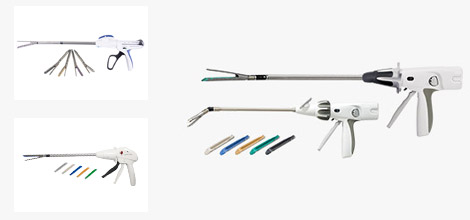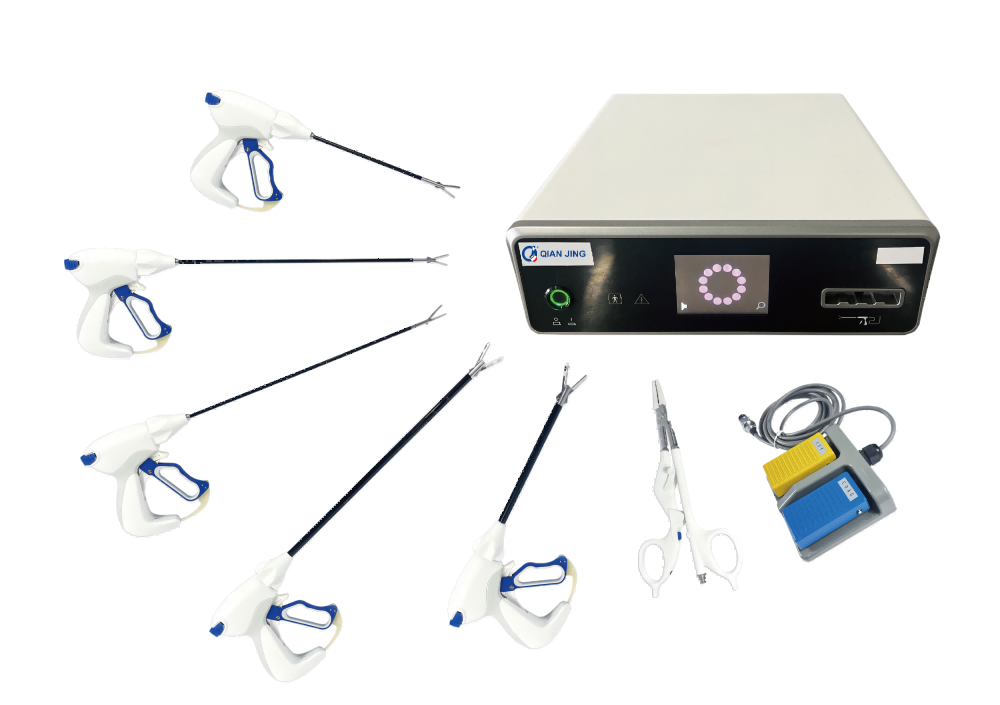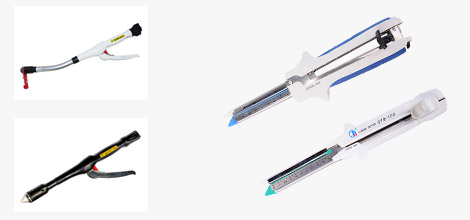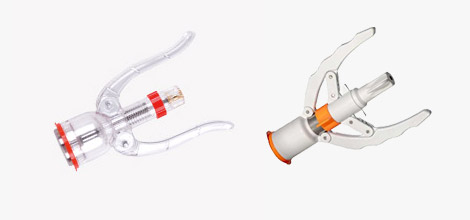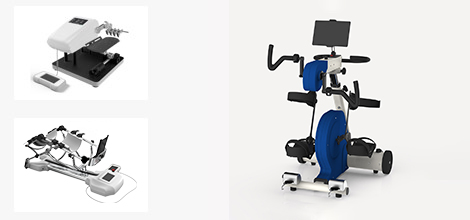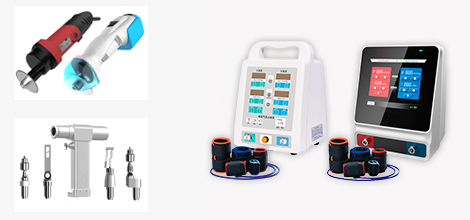How to operate the disposable circular stapler and notes
2022/02/28| View:782
Compared to traditional hand suturing, the disposable circular stapler has the following advantages.
1. Easy and convenient to operate, saving surgical time.
2. Single-use, avoiding cross-contamination.
3. Titanium or stainless steel staples (skin stapler) are used to close tightly and loosely.
The disposable circular stapler includes a staple holder sleeve, a staple holder with a slide bar sleeve, a slide bar attached to the staple holder, and a slide bar inserted in the slide bar sleeve. The sliding rod has a first stop plane and the inner wall of the sliding rod sleeve has a second stop plane, and the two stop planes fit together. One part of the slide bar and the slide bar sleeve has a guide rib along the axial direction of the slide bar, and the other part of the slide bar has a guide groove along the axial direction of the slide bar, and the guide rib is inserted in the guide groove. By the cooperation of the guide bar and the guide groove, the positioning between the slide bar and the staple holder is accurate, i.e. the staple holder is accurately positioned against the staple holder, so that the staple can be correctly formed.
Operation of the disposable circular stapler.
The intestinal anastomosis is used to illustrate the use of the anastomosis, the proximal end of the anastomosis is placed in the intestinal bag suture, the staple holder is placed and tightened, the distal end of the anastomosis is inserted into the anastomosis, the central piercer of the anastomosis is pierced, and the proximal end of the anastomosis is connected to the central rod of the staple holder, rotated close to the intestinal wall of the distal and proximal intestinal canal, the distance between the staple holder and the base of the anastomosis is adjusted according to the thickness of the intestinal wall, generally 1.5 to 2.5 cm or hand rotation is tighter (the handle has a (there is a tightness indicator pin on the handle) open the safety.
Squeeze the anastomosis wrench tightly, hear the "click" sound that means the cutting anastomosis is complete, do not withdraw the anastomosis, check whether the anastomosis is satisfactory and whether there are other tissues such as ties embedded in it, be treated accordingly, spin loose the anastomosis, and gently pull out from the distal end, check whether the distal and proximal intestinal resection circle is complete.
Notes on the disposable circular stapler.
(1) Before operation, check whether the scale is aligned with the 0 scale, whether the assembly is correct, and whether the push piece and tantalum nail are missing. The plastic washer should be placed inside the needle holder.
(2) The section of the intestine ready for anastomosis should be fully freed and stripped at least 2 cm.
(3) The stitch distance of the purse-string suture should not exceed 0.5 cm, with a margin of 2-3 mm. Too much tissue can easily be embedded in the anastomosis and prevent it from closing.
(4) Adjust the spacing according to the thickness of the intestinal wall, 1 to 2 cm is appropriate.
(5) Check the stomach, esophagus and other adjacent tissues before striking to prevent entrapment into the anastomosis.
(6) Cut quickly and apply pressure at the end to make the staple into a "B" shape, and strive for a single successful cut, or re-cut twice if it is considered inaccurate.
(7) Exit the disposable circular stapler gently, and check whether the cut tissue is a complete ring.
1. Easy and convenient to operate, saving surgical time.
2. Single-use, avoiding cross-contamination.
3. Titanium or stainless steel staples (skin stapler) are used to close tightly and loosely.
4. Has few side effects and effectively reduces surgical complications, etc.
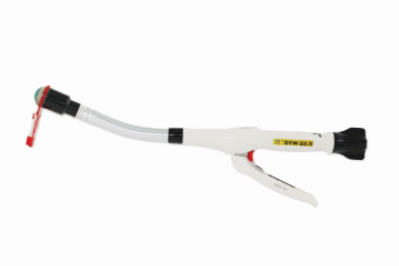
The disposable circular stapler includes a staple holder sleeve, a staple holder with a slide bar sleeve, a slide bar attached to the staple holder, and a slide bar inserted in the slide bar sleeve. The sliding rod has a first stop plane and the inner wall of the sliding rod sleeve has a second stop plane, and the two stop planes fit together. One part of the slide bar and the slide bar sleeve has a guide rib along the axial direction of the slide bar, and the other part of the slide bar has a guide groove along the axial direction of the slide bar, and the guide rib is inserted in the guide groove. By the cooperation of the guide bar and the guide groove, the positioning between the slide bar and the staple holder is accurate, i.e. the staple holder is accurately positioned against the staple holder, so that the staple can be correctly formed.
Operation of the disposable circular stapler.
The intestinal anastomosis is used to illustrate the use of the anastomosis, the proximal end of the anastomosis is placed in the intestinal bag suture, the staple holder is placed and tightened, the distal end of the anastomosis is inserted into the anastomosis, the central piercer of the anastomosis is pierced, and the proximal end of the anastomosis is connected to the central rod of the staple holder, rotated close to the intestinal wall of the distal and proximal intestinal canal, the distance between the staple holder and the base of the anastomosis is adjusted according to the thickness of the intestinal wall, generally 1.5 to 2.5 cm or hand rotation is tighter (the handle has a (there is a tightness indicator pin on the handle) open the safety.
Squeeze the anastomosis wrench tightly, hear the "click" sound that means the cutting anastomosis is complete, do not withdraw the anastomosis, check whether the anastomosis is satisfactory and whether there are other tissues such as ties embedded in it, be treated accordingly, spin loose the anastomosis, and gently pull out from the distal end, check whether the distal and proximal intestinal resection circle is complete.
Notes on the disposable circular stapler.
(1) Before operation, check whether the scale is aligned with the 0 scale, whether the assembly is correct, and whether the push piece and tantalum nail are missing. The plastic washer should be placed inside the needle holder.
(2) The section of the intestine ready for anastomosis should be fully freed and stripped at least 2 cm.
(3) The stitch distance of the purse-string suture should not exceed 0.5 cm, with a margin of 2-3 mm. Too much tissue can easily be embedded in the anastomosis and prevent it from closing.
(4) Adjust the spacing according to the thickness of the intestinal wall, 1 to 2 cm is appropriate.
(5) Check the stomach, esophagus and other adjacent tissues before striking to prevent entrapment into the anastomosis.
(6) Cut quickly and apply pressure at the end to make the staple into a "B" shape, and strive for a single successful cut, or re-cut twice if it is considered inaccurate.
(7) Exit the disposable circular stapler gently, and check whether the cut tissue is a complete ring.



 info@qjmed.com
info@qjmed.com